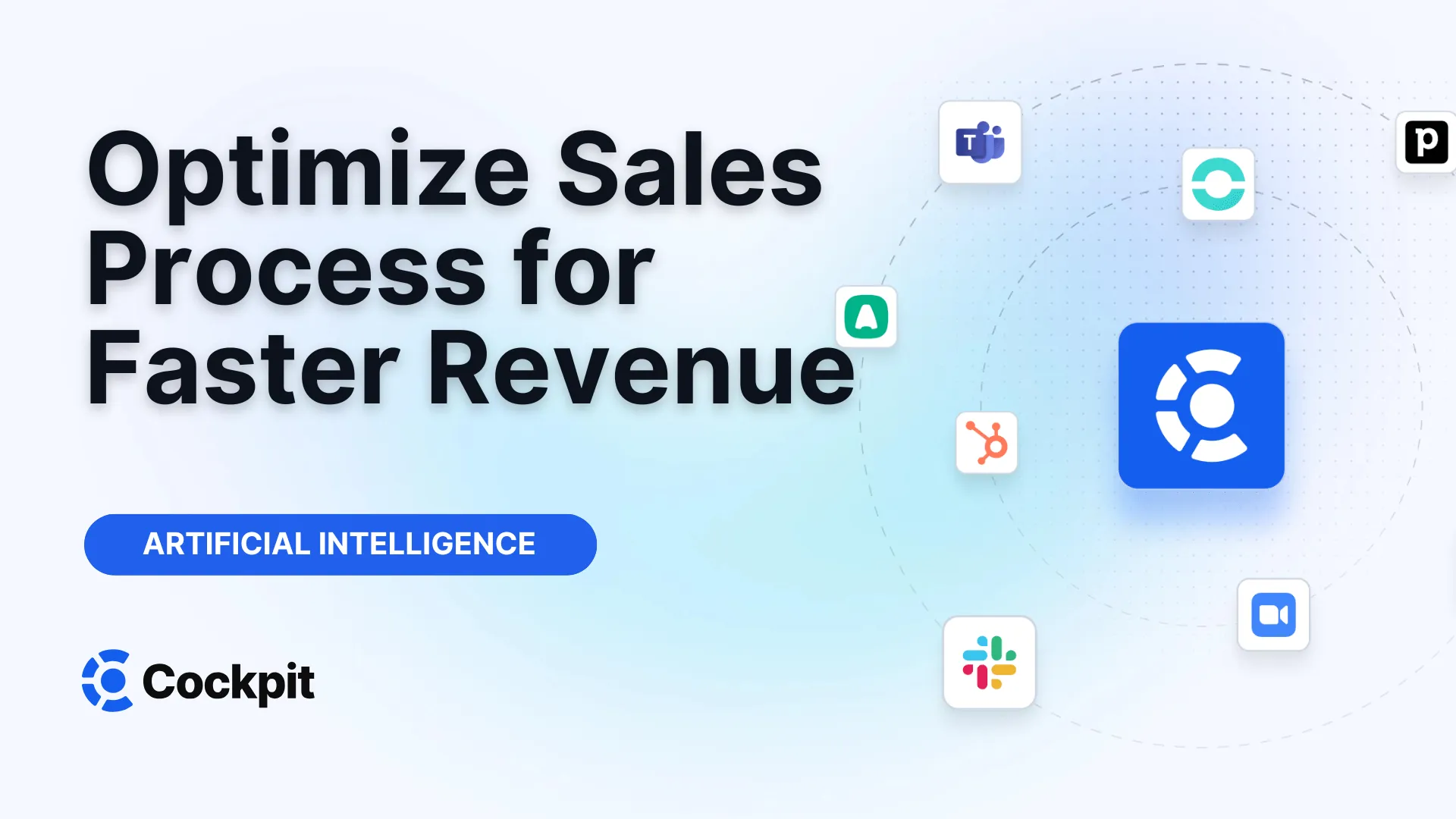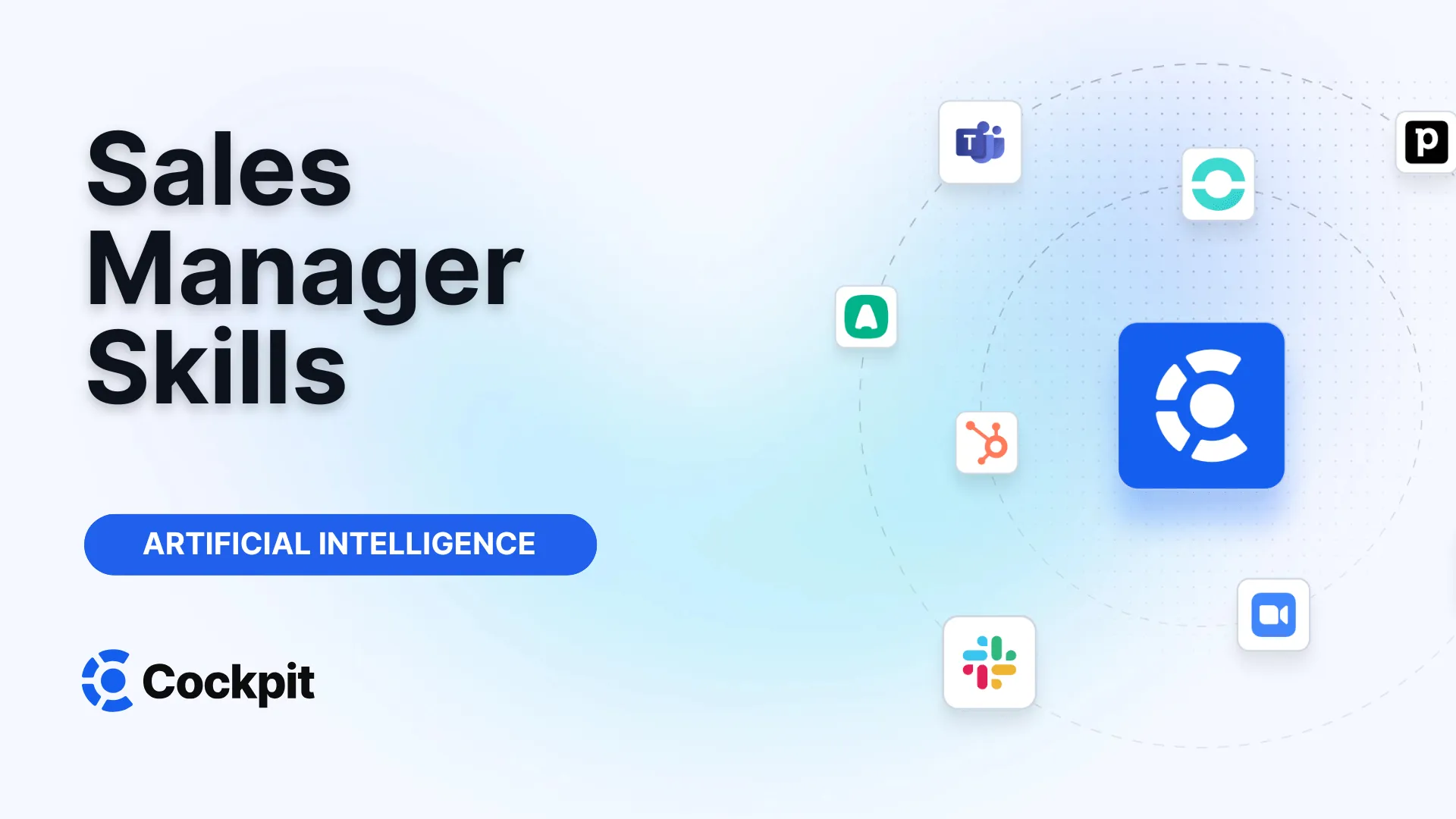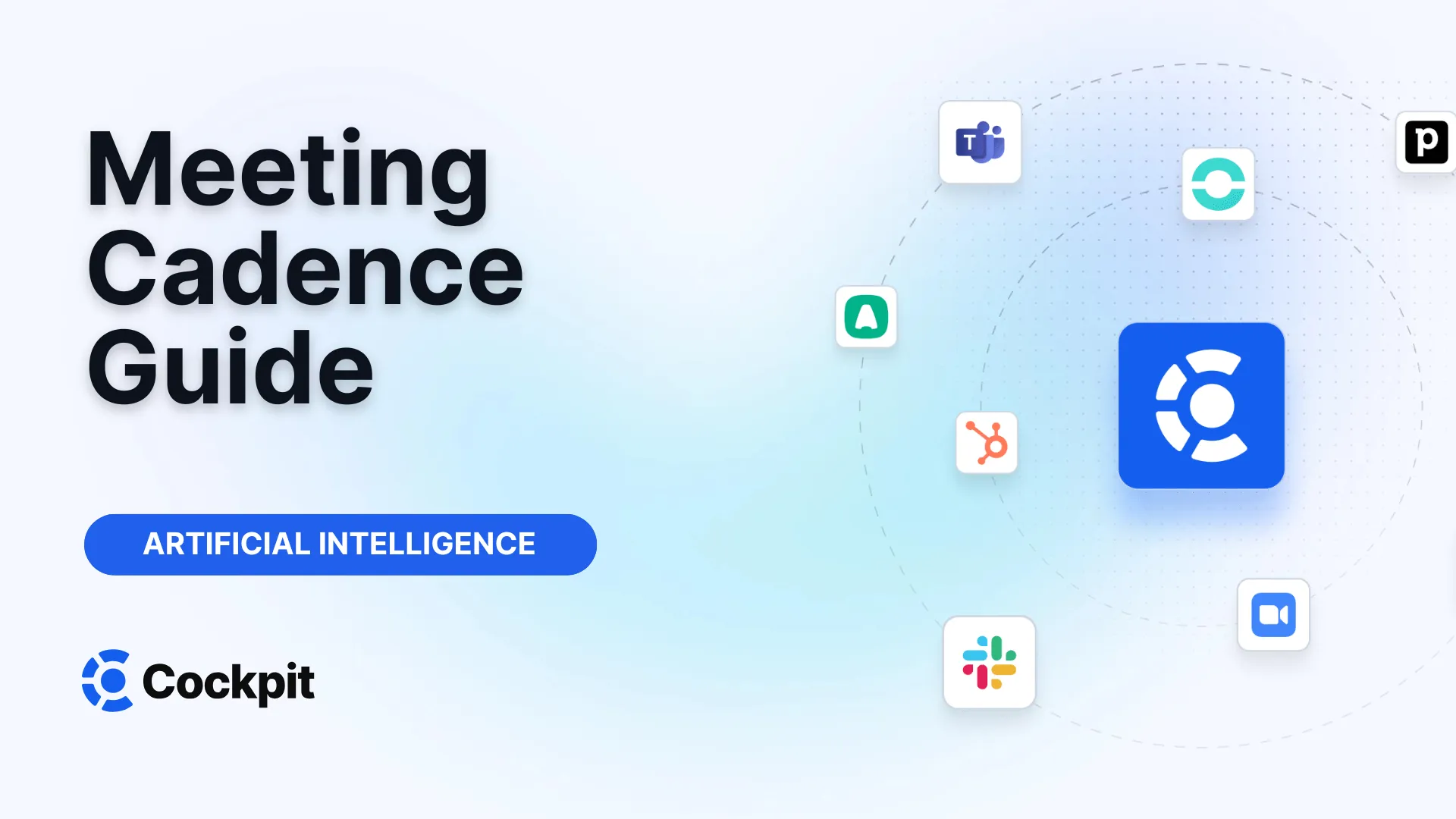Optimize your sales force in just a few clicks

Thousands of sales teams boost their performance with Cockpit. Why shouldn't you?
Explore CockpitSummary
Does your sales team miss opportunities without even realizing it? Do you feel that your sales cycles are lengthening, that deals are becoming more complicated, and that your salespeople spend more time on administration than on selling? What if you could not only fix these weaknesses but also transform your sales process into a real growth engine, capable of generating better results with less effort?
Sales process optimization is not a simple one-time reorganization. It is an iterative and strategic approach aimed at refining every step of your sales cycle. In a fast-evolving B2B environment, a method that worked last year may now be obsolete. Staying competitive means adopting a culture of continuous improvement. By understanding and applying optimization principles, you can equip your teams to close bigger deals faster and build stronger customer relationships.
What is sales process optimization?
Sales process optimization is a strategic and systematic approach to refine, improve, and maximize the efficiency of every stage of the sales journey. It is not about reinventing the wheel but rather about analyzing what exists, identifying bottlenecks, and implementing improvements based on concrete data. It is a disciplined effort that transforms selling from an art into a reproducible science.
A well-defined sales process is a series of steps that salespeople follow to move a prospect through the sales funnel. Although every company has its own specifics, most processes include:
- Prospecting: Identifying potential customers.
- Initial contact: The first point of contact with the prospect.
- Needs identification: Understanding the client’s challenges and objectives.
- Offer presentation: Demonstrating how your solution solves their problems.
- Objection handling and negotiation.
- Deal closing.
- Follow-up and customer loyalty.
The problem is that a typical B2B sales cycle can last from three to nine months, or even longer for major accounts. A poorly defined or poorly followed process is one of the biggest obstacles to sales efficiency. Optimization aims to make this journey smoother, more predictable, and more profitable.
Why a refined sales process is your best strategic asset
Implementing and optimizing a structured sales process is not just an administrative exercise; it is a direct investment in your company’s performance. Organizations that adopt this approach share common characteristics resulting in tangible outcomes. A holistic sales approach, supported by a solid process, leads to more consistent and predictable success.
The benefits are numerous and affect every aspect of sales performance:
- Higher conversion rates: A clear process guides salespeople at every step, ensuring no opportunity is overlooked. Leads are better qualified and nurtured, mechanically increasing the chances of converting them into customers.
- Larger contracts: Teams that follow a standardized process are better equipped to target and manage key accounts. The buying journey feels more coherent for the client, which reinforces trust and enables negotiating higher-value deals.
- Shorter sales cycles: An optimized process helps salespeople identify earlier deals that will never close. By focusing on the best-qualified prospects, they waste less time and accelerate the signing of promising deals.
- Happier and more effective salespeople: Which salesperson would refuse to close more high-value deals in less time? A clear process reduces stress, eliminates friction, and allows sellers to focus on what they do best: selling. A happy team is a more productive and loyal team.
- Better customer retention: Optimization does not stop at signing. It encourages a customer-centric approach that builds lasting relationships. According to some studies, companies with closely aligned sales and marketing teams enjoy 36% higher customer retention rates.
Navigating the challenges of modern selling
Selling, especially in B2B, has never been more complex. Buyers have access to an unprecedented amount of information and interact with salespeople very late in their buying journey. A Gartner study reveals that B2B buyers spend only 17% of their time actively engaging with potential suppliers. This means every interaction must be highly relevant and impactful.
Competition is fierce, and investor and client expectations regarding value have never been higher. In this context, sales leaders must build workflows that are both robust and flexible.
Pipeline leaks: a silent enemy
One of the biggest challenges is spotting “leaks” in your sales pipeline. Do prospects systematically drop out at a specific stage? If so, you have a problem. Is it a prospecting, qualification, demonstration, or negotiation issue? Without precise data analysis, it is almost impossible to know. Examine your conversion rates between each stage carefully to identify weak points.
Moreover, large-scale personalization is a major challenge. B2B clients expect unique experiences, with multiple touchpoints across different channels. A “one-size-fits-all” approach is no longer viable.
Designing your sales process: 3 proven approaches
Before optimizing, you must design. Several methods exist to structure your sales process. Here are three standard models that can serve as a starting point.
1. Sales Process Map
This visual approach represents the flow of events and connections between key moments in the process. A map should be easy to create and interpret. It provides a clear overview of the steps to follow. However, be careful not to make it a rigid instruction list. It should remain a flexible guide, especially during high-value steps requiring adaptability.
2. Sales Process Flowchart
More dynamic than a map, the flowchart allows you to visualize relationships between the various steps and incorporate variables. For example, what happens if a prospect refuses a demo? The flowchart can include a branch to redirect them toward a nurturing campaign. This method is particularly useful for subscription-based business models, as it can be cyclical and consider the entire customer relationship.
3. Buyer-Aligned Sales Process
This approach is less prescriptive and focuses more on the client’s needs and pain points at each stage of their journey. The idea is to break down tasks into two categories: buyer activities (creating internal consensus, validating the budget) and seller activities (demonstrating ROI, presenting a proposal). This gives salespeople a better understanding of what their prospects expect from them at every moment, fostering consultative selling rather than transactional selling.
9 actionable strategies to optimize your sales process
Once your process is sketched, optimization can begin. Incorporating the following steps into your workflow will take your efficiency to the next level, directly reflecting in your revenue.
1. Build a detailed Ideal Customer Profile (ICP)
For your team to focus on the right prospects, creating an Ideal Customer Profile (ICP) is imperative. Go beyond simple demographics.
- Analyze your best current customers: What common characteristics do they share (industry, company size, technologies used)?
- Identify their pain points: What problems does your solution solve for them?
- Understand their buying motivations: What triggers them to act?
- Create “negative personas”: Identify characteristics of customers who churn to avoid targeting similar prospects in the future.
A precise ICP guides every step of the process, from prospecting to closing.
2. Define and align with the customer journey
Put yourself in your clients’ shoes. Conduct interviews with your sales team to understand how prospects move through your funnel.
- Who are the key decision-makers involved?
- How do you build trust and credibility?
- How many touchpoints are typically required?
The answers to these questions will help you anticipate needs and guide your salespeople on actions to take at each stage.
3. Foster seamless alignment between sales and marketing
Sales and marketing teams share similar goals but often work in silos. This is a costly mistake. Strong alignment is crucial.
- Set common goals and interconnected KPIs.
- Create a shared funnel so each team knows what the other is doing.
- Collaborate on content creation to address prospects’ real questions.
- Ensure data sharing between your CRM and marketing tools for a 360° customer view.
Organizations with aligned teams record 38% higher win rates.
4. Continuously refine your qualification criteria
The first steps of your process are the most important. If your pipeline is filled with unqualified leads, nothing else matters. Key buying indicators constantly evolve. Regularly review and update your lead qualification criteria (e.g., via a lead scoring system). Train your salespeople to ask the right questions during early conversations to ensure they invest their time on the right opportunities.
5. Master pipeline management and spot bottlenecks
Ideally, a high percentage of prospects should move smoothly through your pipeline. When that is not the case, analyze your data to identify the stage where leads fall off. If you observe a significant drop between the demo and proposal stage, for example, that’s where to focus your efforts. A well-targeted lead nurturing campaign is often the solution to keep engagement with prospects not yet ready to buy.
6. Leverage data and measure the right KPIs
You cannot improve what you do not measure. But beware of vanity metrics. Focus on indicators that truly impact performance:
- Sales cycle length: How long does it take to close a deal?
- Win rate: Percentage of opportunities won.
- Average contract value (ACV): Average annual revenue per customer.
- Salesperson productivity: Number of activities (calls, demos) needed to generate results.
Share this data with your team to encourage healthy competition and collective awareness.
Expert advice
Data transparency is a powerful motivator. By giving salespeople access to their own metrics and those of the team, you enable them to self-assess and understand where they need to improve. A clear dashboard showing rankings and progress toward targets can turn performance measurement into an engaging game rather than a surveillance tool.
7. Eliminate tedious tasks through automation
Salespeople spend only 28% of their time on actual selling on average. The rest is absorbed by administrative tasks such as data entry, report writing, or CRM updates. This is where technology becomes an indispensable ally.
Automation allows delegating these laborious tasks to smart software. At Cockpit, we have designed our platform to free salespeople from this burden. By automatically recording, transcribing, and summarizing every sales call, we enable your teams to focus 100% on the conversation. Key insights, next steps, and pain points are then synchronized instantly in your CRM. Your salespeople can thus devote their energy to listening, persuading, and building relationships while technology takes care of the rest.
8. Strengthen your team’s skills through ongoing coaching
The best process in the world is useless without competent people to apply it. Optimization involves investing in your teams.
- Assess each salesperson’s strengths and weaknesses.
- Identify specific training needs.
- Use call recordings for targeted and objective coaching sessions.
Platforms like ours, with features such as the AI Playbook, facilitate this process. They allow managers to objectively analyze calls, ensure sales methodology is followed, and share video clips of best practices to accelerate onboarding and skill development.
9. Leverage customer feedback for continuous improvement
B2B sales is a matter of human interactions. A poor conversation or missed follow-up can ruin weeks of work. To avoid these pitfalls, listen actively to your clients.
- Implement satisfaction surveys.
- Conduct interviews with key clients to understand their frustrations and expectations.
- Use this feedback to adjust your process, messaging, and even your product.
After implementing changes based on this feedback, measure satisfaction again to quantify the impact of your efforts.
The role of technology in optimizing modern sales
Sales optimization is inseparable from technology. Modern tools are no longer simple gadgets but strategic pillars that enable best practices at scale. They automate tasks, provide valuable data, and facilitate collaboration.
Note
Adopting a new technological tool must serve your strategy, not the other way around. Before investing, make sure the solution integrates easily into your existing workflows and solves a concrete problem for your teams. A complex or poorly integrated tool will create more friction than it resolves. At Cockpit, we have designed an intuitive interface that integrates in less than 5 minutes with your video conferencing tools and CRM.
To illustrate the impact of technology, let us compare a manual process with an optimized one using a platform like ours:
| Task | Manual sales process | Optimized process with Cockpit |
|---|---|---|
| During the call | The salesperson frantically takes notes, risking missing key information. | The salesperson focuses 100% on listening and dialogue. Transcription and recording happen in the background. |
| After the call | The salesperson spends 15-30 minutes writing a report and manually updating the CRM. | The AI summary is generated instantly. CRM fields (opportunity, next steps, etc.) are updated automatically. |
| Follow-up email | Manual drafting of the email, based on incomplete memories and notes. | The follow-up email is automatically generated by AI, ensuring consistency and accuracy. |
| Coaching | The manager relies on the salesperson’s statements or attends a few live calls (shadowing). | The manager can review any call, obtain an objective score via the AI Playbook, and share video clips for precise feedback. |
Ultimately, sales process optimization is a journey, not a destination. It is a culture of analysis, adaptation, and continuous improvement. By combining a clear strategy, competent teams, and smart technology, you do not just improve your processes; you build a sustainable competitive advantage that will fuel your growth for years to come.
FAQ - What is the very first step to optimize my sales process?
The first and most crucial step is to conduct a comprehensive audit of your current process. Before changing anything, you must understand what works and what does not. Map every step of your sales process as it exists today, from prospecting to retention. Then dive into your data: analyze your conversion rates between each stage, identify where prospects drop out most often, and interview your best salespeople about their practices. This initial assessment will provide you with a solid database to prioritize your optimization efforts and focus on the areas with the greatest impact.




